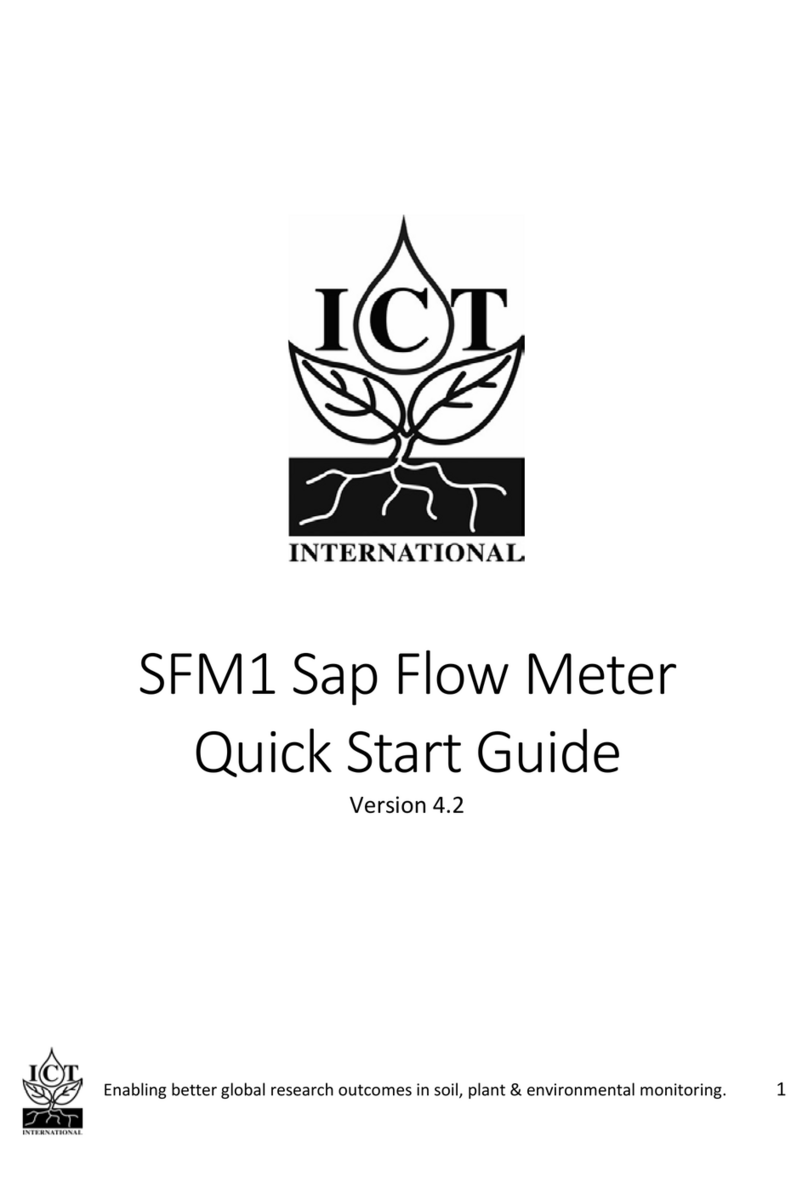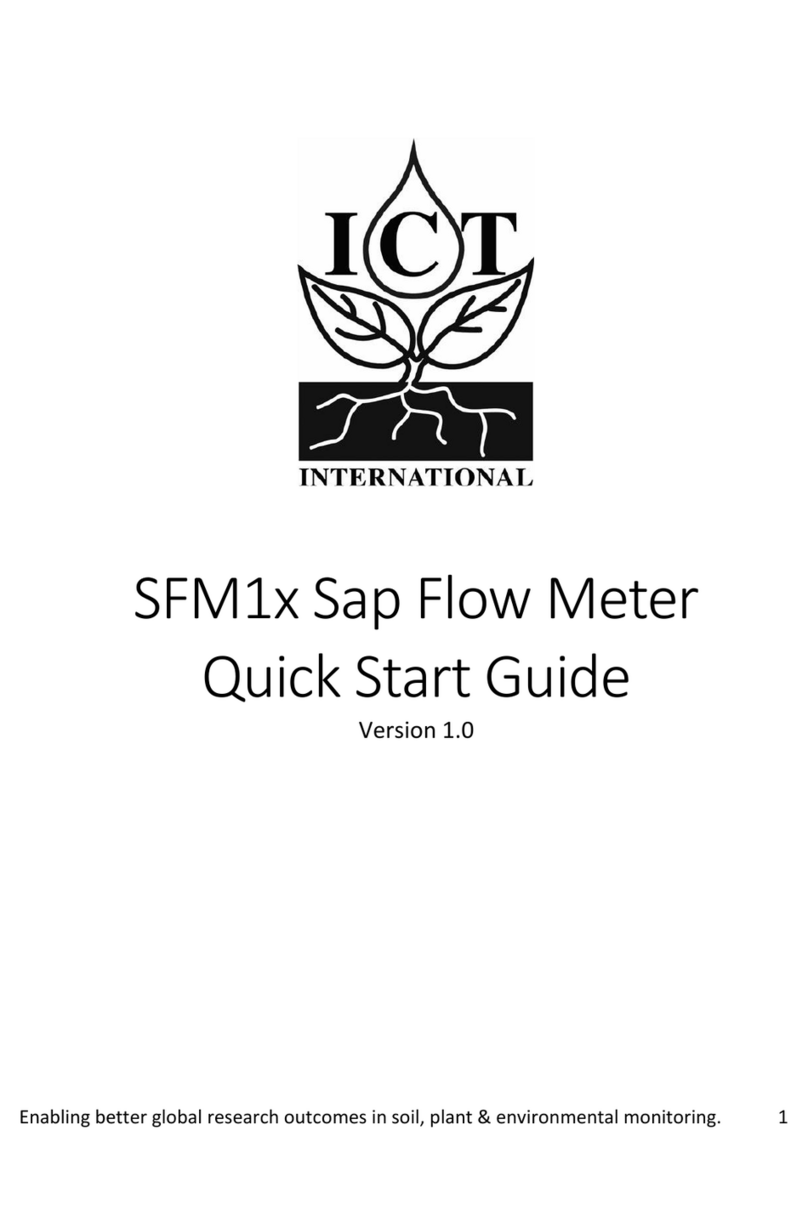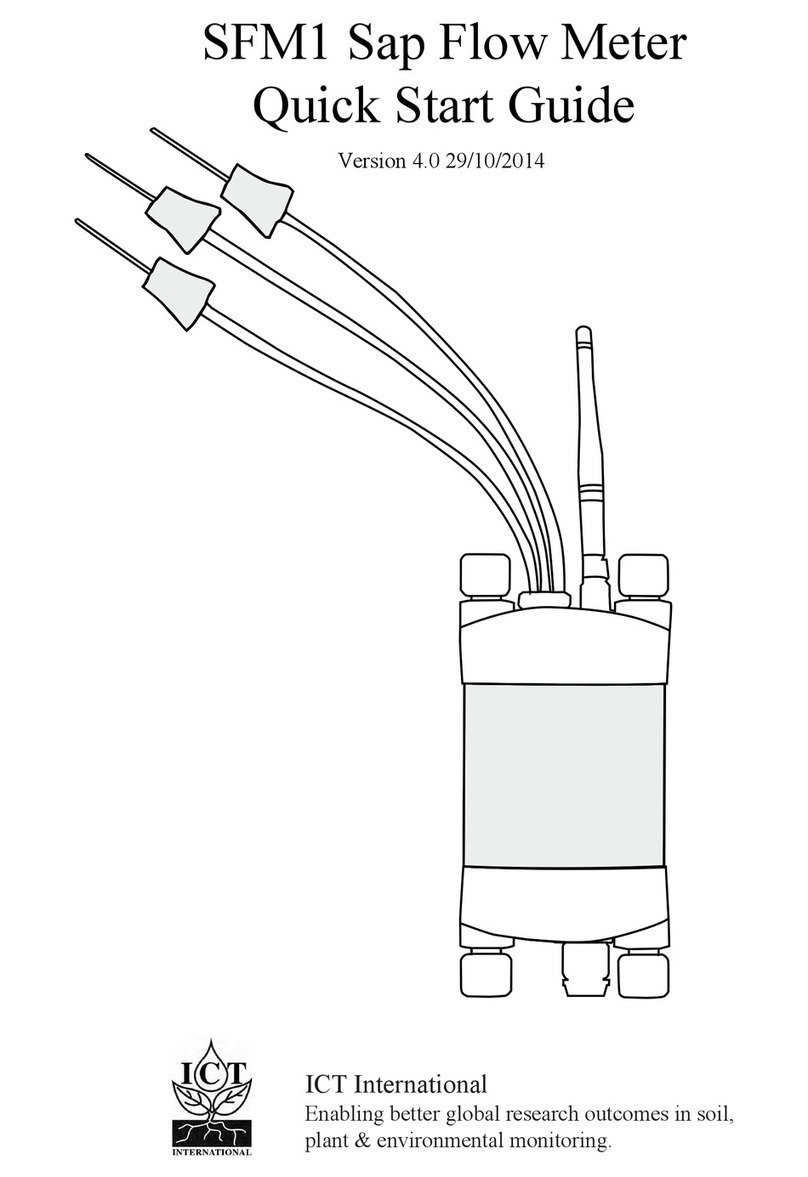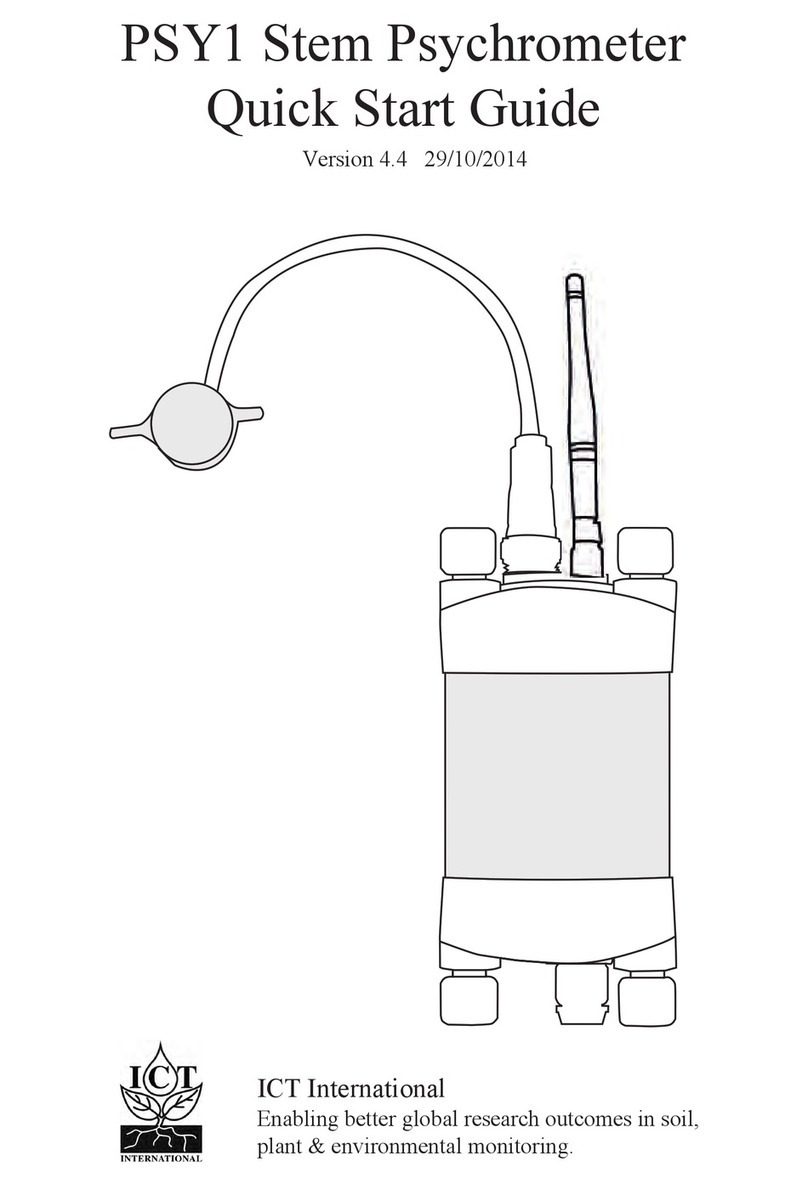Contents
System Requirements ....................................................................................... 4
Charging the PSY1 Internal Battery................................................................... 5
Connecting a Power Supply to the Instrument............................................. 6
Connecting Power Directly via Solar Panel ................................................... 7
Connecting Power Directly via CH24 Power Supply ..................................... 8
Cleaning the Psychrometer Chamber ............................................................... 9
Installing ICT Combined Instrument Software and USB Driver....................... 10
Turning the Instrument On ............................................................................. 11
Connecting to the Instrument......................................................................... 12
Connect via MCC Mini................................................................................. 13
Setting Measurement Parameters.................................................................. 14
Configuration .............................................................................................. 15
Cooling Time and Waiting Time .............................................................. 15
Chamber Heating .................................................................................... 16
Calibration................................................................................................... 16
Diagnostics .................................................................................................. 17
Reverse Peltier (Warming)...................................................................... 17
SD Card Logging Options............................................................................. 18
View Options............................................................................................... 18
PSY Logger Mounting and Sensor Installation ................................................ 19
Selecting a Site ............................................................................................ 19
Preparing a Site........................................................................................... 21
Sealing the Exposed Site ............................................................................. 22
Downloading Data........................................................................................... 23

































